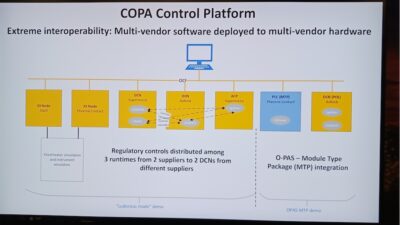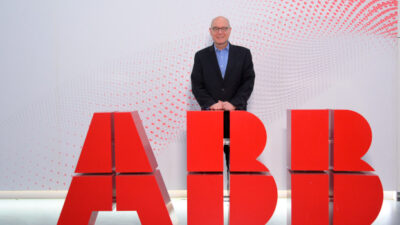Part 3 of a four-part series on OPAF implementations: Strategies and tools are enabling devices and platforms using technologies aligned with Open Process Automation Standards. See O-PAS-aligned components list and some project summaries shared with Control Engineering at 2024 ARC Industry Forum.
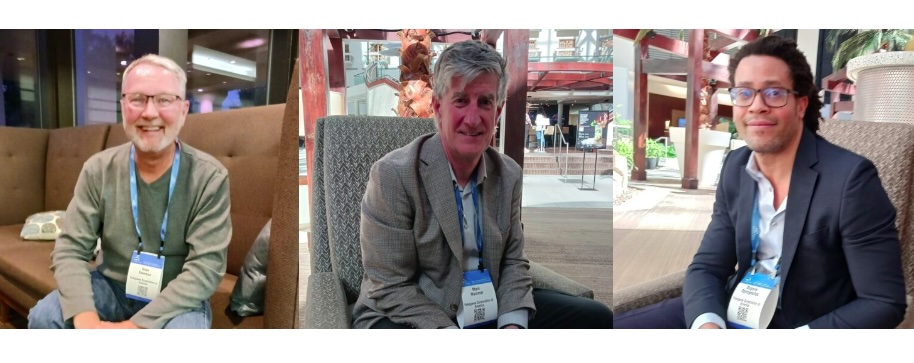
Learning Objectives
- Understand timeline for open process automation components certification, until then O-PAS-aligned products are available; standard for open process automation hardware interchangeability is underway.
- Explore implementations, services, components, functions available for open process automation, as OPAF and Yokogawa explained to Control Engineering at 2024 ARC Industry Forum.
Open process automation components, projects insights
- Open process automation components certification is expected in the third quarter; until then, O-PAS-aligned products are available.
- Standard for open process automation hardware interchangeability is underway.
- Open process automation implementations, services, components, functions available are explained to Control Engineering at 2024 ARC Industry Forum by OPAF and Yokogawa Corporation of America.
Components, software, hardware, strategies, system integration and implementations are well underway for open process automation, allowing Open Process Automation Forum (OPAF)-aligned replacements for functions that a distributed control systems (DCS) performs. At the 2024 ARC Industry Forum, Control Engineering discussed Open Process Automation Standards (O-PAS) progress and next steps with:
-
Dave Emerson, Yokogawa Corporation of America, vice president USTC (U.S. Technology Center) and OPAF co-chair of the enterprise architecture working group (EAWG) (Figure 1).
-
Mark Hammer, Yokogawa Corporation of America, product management (Figure 2).
-
Eugene Spiropoulos, Yokogawa Corporation of America, autonomous systems strategist (Figure 3).
Open process automation component certification in third quarter
Emerson said OPAF certification capability is expected in third-quarter 2024. Products now are considered OPAF-aligned if they follow the standards. Certification is for components, not for the system. System integrators can help ensure integration of components provide expected levels of open process automation performance, especially as they take over critical processes previously performed with a DCS. Many DCS installations are nearing or beyond useful life and require replacement soon.
ExxonMobil is working with Rockwell Automation and other vendors to encourage OPAF-aligned components and systems. The ExxonMobil OPA-integrated system is in staging and cutover is expected third-quarter 2024.
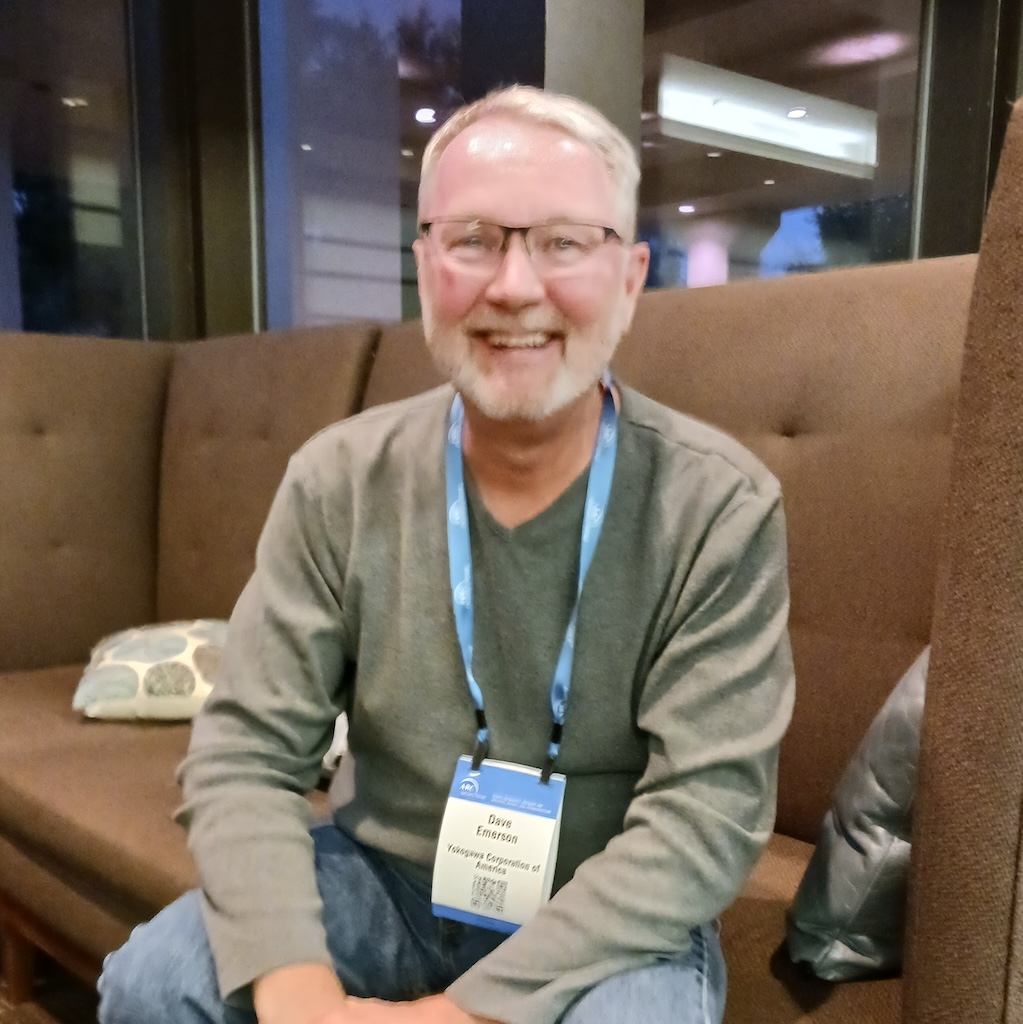
Hammer said O-PAS is only one of open standards being applied to new process automation devices and systems.
Spiropoulos said today’s process control systems help operators validate devices and systems for a flawless startup, and system integrators are working on a similar approach for open process automation installations.
Emerson acknowledged the open automation approach is different. With OPA, system integrators and users will have a menu for the software functions to do this or that, without caring what the device is.
It will include secure onboarding. Hammer said there will be a cybersecurity plug-in to say, “I’m here. Here’s my certificate. I’m OK.” Security is designed-in from the bottom up.
Open process automation hardware interchangeability standard; I/O replacements
Emerson said a PICMG standard is underway to deal with the different set of engineering challenges required for hardware. Software people may underestimate this interchangeability challenge. It will come, but a standard will take longer than with interchangeable software modules. Emerson said the goal is for it to be seamless with hardware replacements also. UL and CE stamps will be needed after the hardware standard interconnection is set.
Hammer said I/O replacement in a OPA environment may be the last leg to tackle in the technology transition to open process automation platforms.
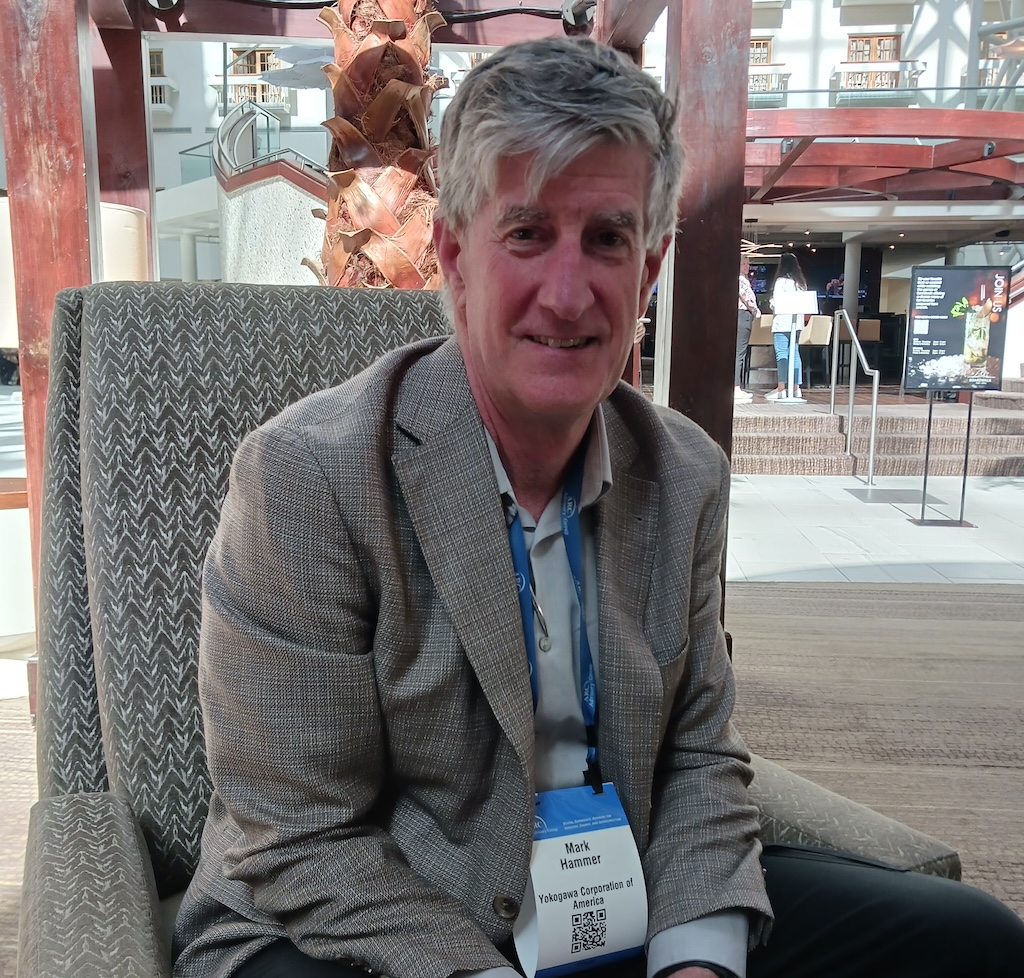
Emerson said the ExxonMobil field trial system includes an I/O module that does everything. It will be expensive to start and probably more than someone would save. We’re configuring a trial system based on the size of the cabinet; 48 seems to be a sweet spot, but not more than 96. We’re still learning.
With the distribution of software function blocks, there may be fewer I/O needed, and, if one fails, it can be changed out. It may not necessarily be less costly for operations.
Overall goal is reducing the work to engineer a system repeatable around the world at scale.
IT is used to a standard bill of material. OT will get there.
Hammer said the engineering, procurement and construction (EPC) process has to adapt, giving customers more control. OPAF is helping with language that can be used in requests for proposals (RFPs).
Standard, repeatable, flexible open process automation, function blocks
Emerson said the goal is to use experiences to date with Petronas, Reliance, Shell and others to ensure that new projects are repeatable and standard.
Hammer acknowledged that it’s different involving a wider variety of vendors, but users need the result to be maintainable, certified and qualified, while flexible. Function block (FB) integration (achievements described at 2024 ARC Industrial Forum) will extend to applications adding value with artificial intelligence and machine control (AI/ML) capabilities for a lower total lifecycle cost. Younger engineers will appreciate key components of open systems, easier integration and faster controller advantages to help many applications.
Spiropoulos said OPA enables optimization of process control pushed lower to the controller level, taking advantages of AI functions. Skid manufacturers will be able to use optimized controls in equipment they use. Productivity has been bottlenecked for 30 years, and as the workforce continues to change to the next generation, they won’t think the systems in use now are OK.

Summary of Yokogawa OPAF involvement
A Yokogawa fact sheet summarizes OPAF and other open standards involvement. Yokogawa said, “The O-PAS standard and the application of open technologies in process automation are still in their early stages. Yokogawa will support OPAF to evolve the O-PAS standard and build out the certification program and help the industry adopt OPA by participating in OPAF and serving as an OPA system integrator, service provider and component supplier.” Projects include:
ExxonMobil: Yokogawa operated ExxonMobilʼs OPA test bed since 2019. The OPA test bed conducted experiments to determine the best approaches for OPA component development and OPA system architecture for use in an OPA field trial system. In 2022 ExxonMobil awarded Yokogawa a contract for to be the system integrator for ExxonMobilʼs OPA field trial project, now being staged in Yokogawaʼs Sugar Land office, will undergo a factory acceptance test (FAT) in 1Q 2024 after which it will be installed in an ExxonMobil manufacturing facility in the U.S. Gulf Coast area. The system will contain more than 2,000 I/O points and will be used to control a production facility.
Petronas: Yokogawa delivered an O-PAS-aligned system to Petronas in 2023. The system was engineered and staged in Yokogawa Malaysia in Kuala Lumpur and installed in Petronasʼ INSTEP technical training institute in Malaysia.
Reliance: Yokogawa is supplying an O-PAS-aligned system to Reliance Industries Ltd., the largest private sector corporation in India. The system is currently being staged and configured at Yokogawa India in Bangalore.
Shell: Yokogawa has supplied an O-PAS-aligned system to Shell for use by Shell engineers for learning more about OPA. In 2024 Yokogawa will install an OPA system in the Yokogawa office at Shellʼs Energy Transition Campus Amsterdam (ETCA). This system will be used to explore how OPA can support the worldʼs energy transition.
Yokogawa is an O-PAS service provider, supplies O-PAS-aligned devices, components
Because Yokogawa’s O-PAS-aligned systems are used for engineering and operations, Yokogawa delivers OPA services for the OPA system, including components from the Yokogawa supplier network. Yokogawa O-PAS-aligned supplier network includes ASRock, Dell, Inductive Automation, Phoenix Contact, Red Hat, R. Stahl, Schneider Electric and VMware.
In addition, Yokogawa has teamed with VMware, Dell, Intel and Schneider Electric to develop what OPAF calls the Advanced Computing Platform (ACP). Yokogawaʼs OPA ACP provides a high availability infrastructure for workloads and fully supports the use of container technologies, such as Kubernetes and Docker, as well as the more traditional virtualization technologies like virtual machines.
Yokogawa is a member of the OPC Foundation, with representation on the board of directors and several technology committees. OPC Unified Architecture (UA) experience is used in building the OPC UA infrastructure upon which O-PAS is built.
Yokogawa is working with technology based on the FIDO Alliance to lessen the work needed to provision new components and to make establishing trust more secure.
Yokogawa is also a member of Universal Automation Organization (UAO) for bringing IEC 61499 technologies to the industry.
Open process automation for key process control functions
Yokogawa has developed new O-PAS-aligned components and devices needed as a system integrator and supplier for the following functions:
-
Stopped
-
System management
-
System monitoring
-
System automation and orchestration
-
Redfish server
-
Interoperability, interchangeability and portability
-
DCN software
-
Alarm system
-
Gateway to non-O-PAS-aligned components
-
Security.
Yokogawa OPA-aligned components to build OPA systems include the Yokogawa Collaborative Information Server (CI Server), which has been used to provide operator HMI, subsystem interfaces (such as Modbus), alarm system components and historian functions. CI Serverʼs OPC UA support include OPC data access (DA), OPC HA (Historical Data Access with UA) and OPC Alarms and Conditions (AC).
Mark T. Hoske is content manager, Control Engineering, CFE Media and Technology, [email protected], with materials from Yokogawa Corporation of America.
KEYWORDS: O-PAS, OPAF, open process automation, system integration
CONSIDER THIS
Until certified products are available starting in the third quarter, are you OK with O-PAS-aligned products used in ExxonMobil, Petrobas and Shell implementations?


